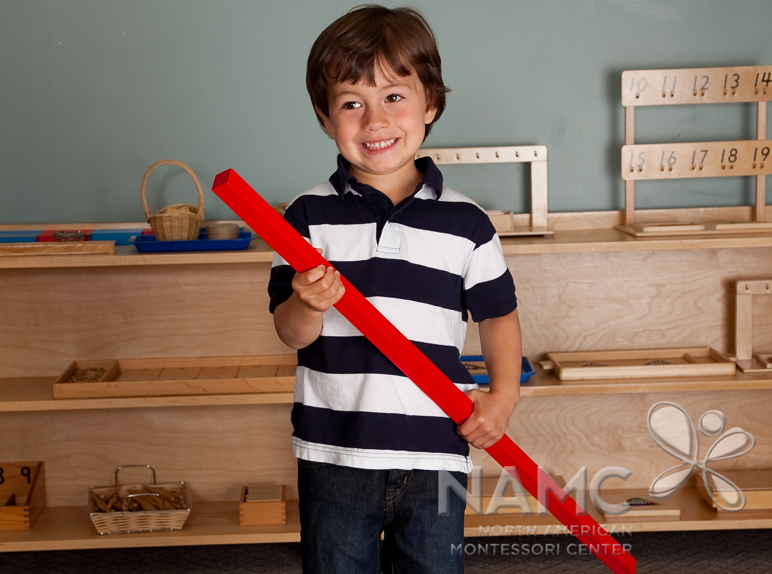
One test of the correctness of educational procedure is the happiness of the child.
—Maria Montessori
What You Should Know About Your Child, p. 73.
What You Should Know About Your Child, p. 73.
When adults talk about work, we often think of it in negative terms. We say “I have to go to work” rather than “I get to go to work.” We refer to weekdays as the “work week” and to our weekends as “play time” or as time to relax. We see work as that which we must do in order that we may enjoy ourselves later.
The Montessori Environment Provides Opportunities to Explore through Play
Play is the Work of Children
The negative connotations we associate with work cause us to look perhaps a bit too harshly upon the use of the term in the Montessori context. “The child can develop fully by means of experience in his environment. We call such experiences ‘work.’” (The Absorbent Mind, p. 88) We already know Dr. Montessori thought play was the important work of childhood.If you watch a child of three, you will see that he is always playing with something. This means he is working out, and making conscious, something that his unconscious mind has earlier absorbed. Through this outward experience, in the guise of a game, he examines those things and impressions that he has taken in unconsciously. He becomes fully conscious and constructs the future man, by means of his activities….He does it with his hands, by experience, first in play and then through work.
The Absorbent Mind, p. 27.
Building upon the child’s need to play and construct himself, Montessori developed her materials to best assist with his development. Kathy Hirsh-Pasek tells us that a planned play environment is “enriched with objects/toys that provide experiential learning opportunities, infused with curricular content.” (Hirsh-Pasek, 2014) This is Montessori’s prepared environment!

Montessori uses what Hirsh-Pasek refers to as “guided play.” The Montessori teacher guides the child’s experiences and learning using the Montessori materials. By modeling the materials, she is, in a sense, co-playing with the children as well as suggesting new ways in which to use the materials. (Hirsh-Pasek, 2014)
The Montessori environment is not restrictive. Children are free to move and explore. They have free choice over which materials to use and which lessons they would like to learn.
They learn patience and emotional control when someone else is using a material and they have to wait. The materials are engaging and relevant to the children. The curriculum is integrated, not disjointed, which helps children make sense of the world around them. These are the executive functions that help children succeed not just in the Montessori environment but throughout life.
Work versus play. Play versus work. Maybe we are too caught up in the semantics to realize that guided play is exactly what is happening in the Montessori environment. We give children the ability to discover and explore, using specifically designed materials, in order to conceptualize and construct their own learning.
Works Cited
Hirsh-Pasek, Kathryn. “The power of playful learning: How guided play sparks social and academic outcomes.” Early childhood investigations.
Montessori, Maria. The Absorbent Mind. Wheaton, IL: Theosophical Press, 1964.
Montessori, Maria. What You Should Know About Your Child. Madras, India: Kalakshetra Publications, 1948.
As much as possible, NAMC’s web blog reflects the Montessori curriculum as provided in its teacher training programs. We realize and respect that Montessori schools are unique and may vary their schedules and offerings in accordance with the needs of their individual communities. We hope that our readers will find our articles useful and inspiring as a contribution to the global Montessori community.
© North American Montessori Center - originally posted in its entirety at Montessori Teacher Training on Thursday, February 5, 2015.
© North American Montessori Center - originally posted in its entirety at Montessori Teacher Training on Thursday, February 5, 2015.

0 comments:
Post a Comment
Have questions or comments? Let us know what you thought about this article!
We appreciate feedback and love to discuss with our readers further.